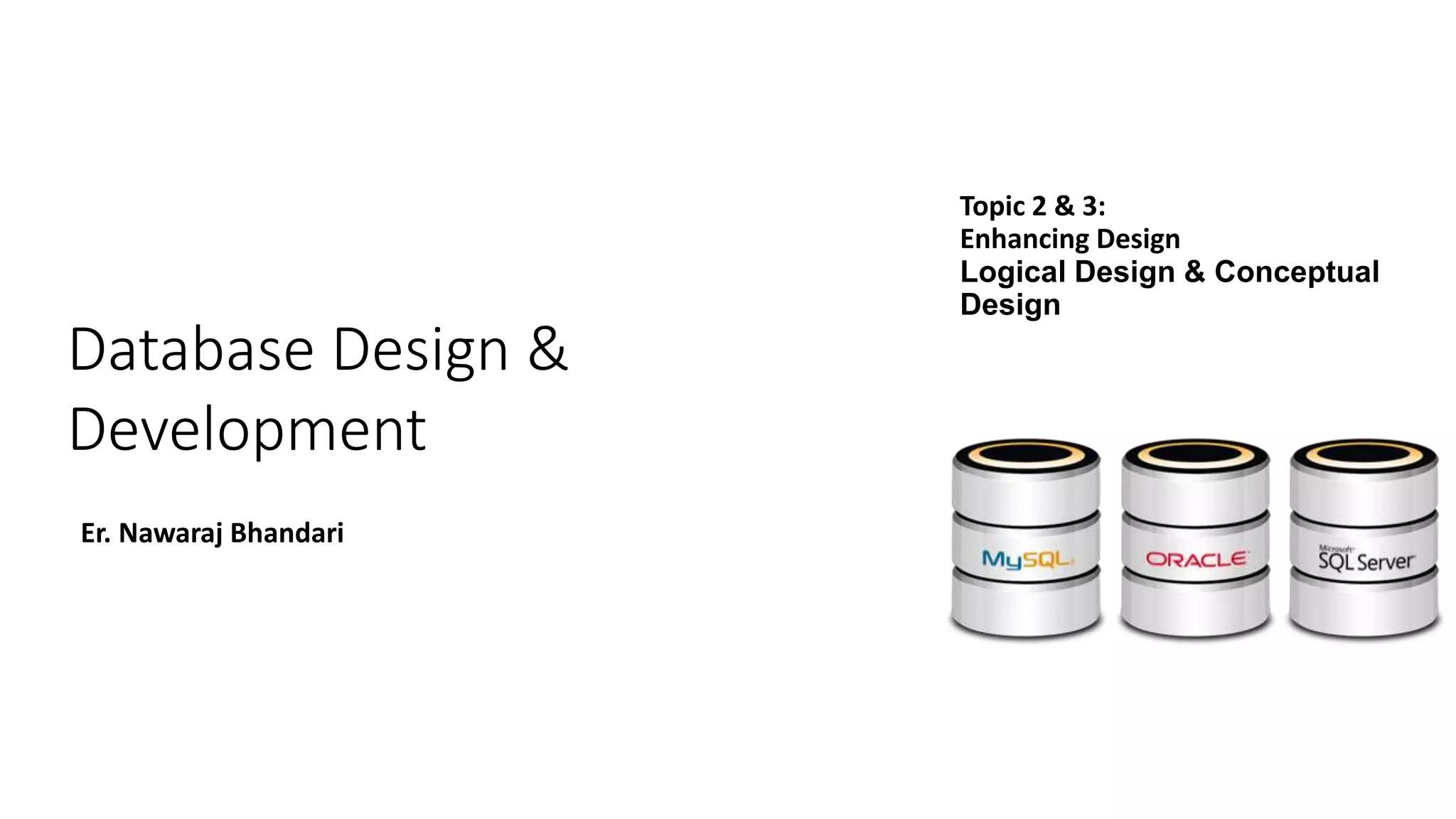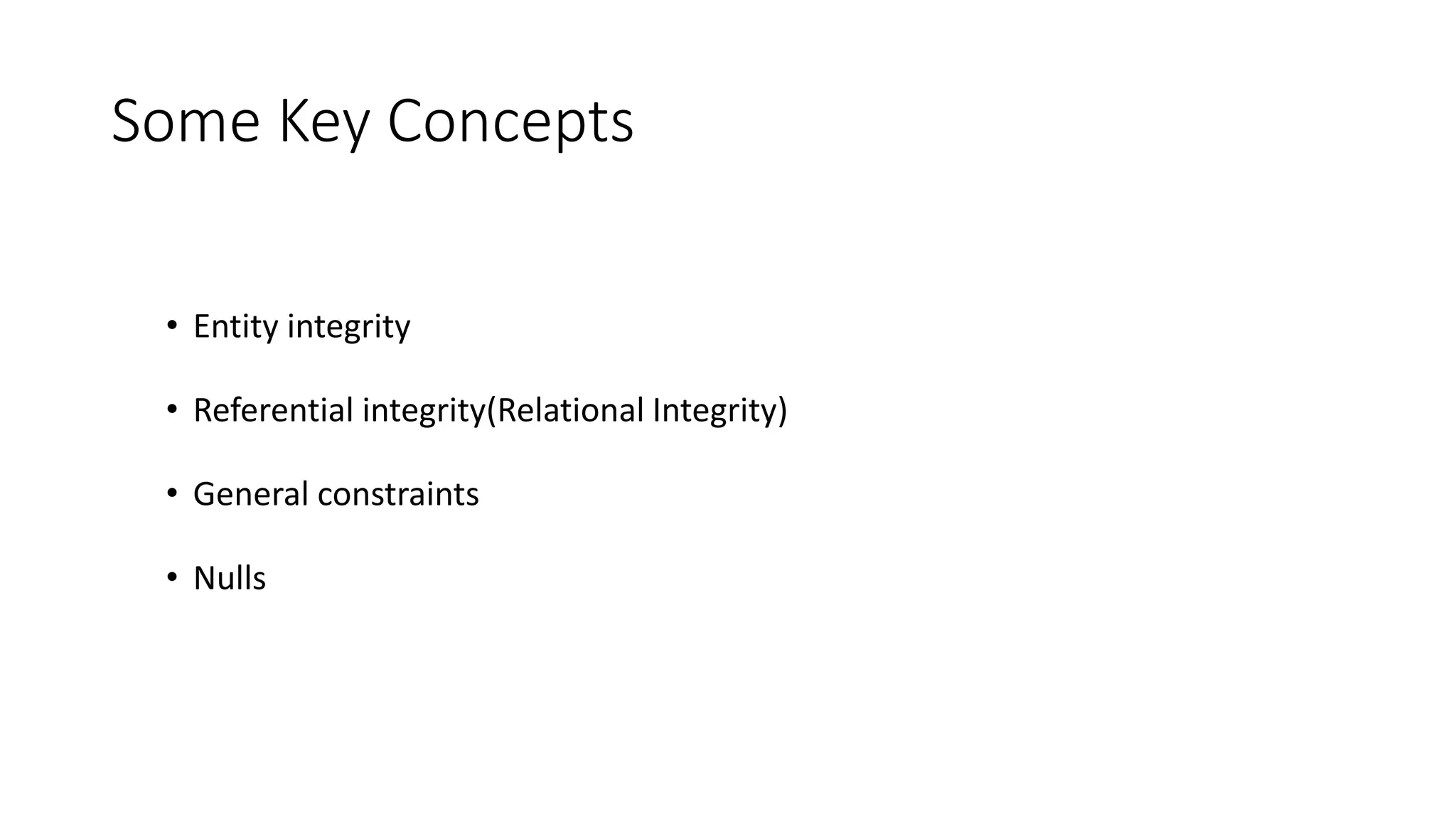The document discusses key concepts of database design, focusing on logical and conceptual design principles, including entity integrity, referential integrity, and functional dependencies. It explains the importance of normalization to eliminate anomalies (insert, update, delete) and provides examples to illustrate how to move from un-normalized forms to first, second, and third normal forms. It also outlines the steps for mapping entity-relationship models to tables and emphasizes the necessity of user involvement in the design process.





























































